Pistol caliber carbines have been around for a long time, now. Most were downscaled AR platforms with mechanical adapters to accommodate pistol calibers, and some were based on hunting rifle designs and crossed over. Daniel Defense has a long history in the firearms community and pioneered many advances in the AR platform. They have fulfilled numerous military contracts, including contracts with USSOCOM, as well as contracts to foreign militaries, in addition to tens of thousands of rifles sold to the American public. Their design and manufacturing process is highly-evolved, and state-of-the-art.
The Daniel Defense Pistol Caliber Carbine (PCC) is a purpose-designed carbine. Despite bearing design hallmarks of the AR platform, it has many unique features. When we decided to do a SADJ review on it, we chose the 13.6-inch long, short-barreled rifle (SBR) version. It seemed the right choice for a duty-type weapon. It’s available in a select-fire option, though we did not move forward with that option.
The PCC SBR has an 8.3-inch cold hammer forged, ½x28 threaded barrel with a 1:10-inch twist rate and an S2W profile. Most muzzle devices made for 9mm AR carbines will be useable on the DD PCC. It’s recoil-operated (no gas or piston system), uses a hydraulic buffer, weighs only 6.1 pounds (2.77 kg) unloaded, with an overall length of 22.5 to 27 inches, depending on stock setting.

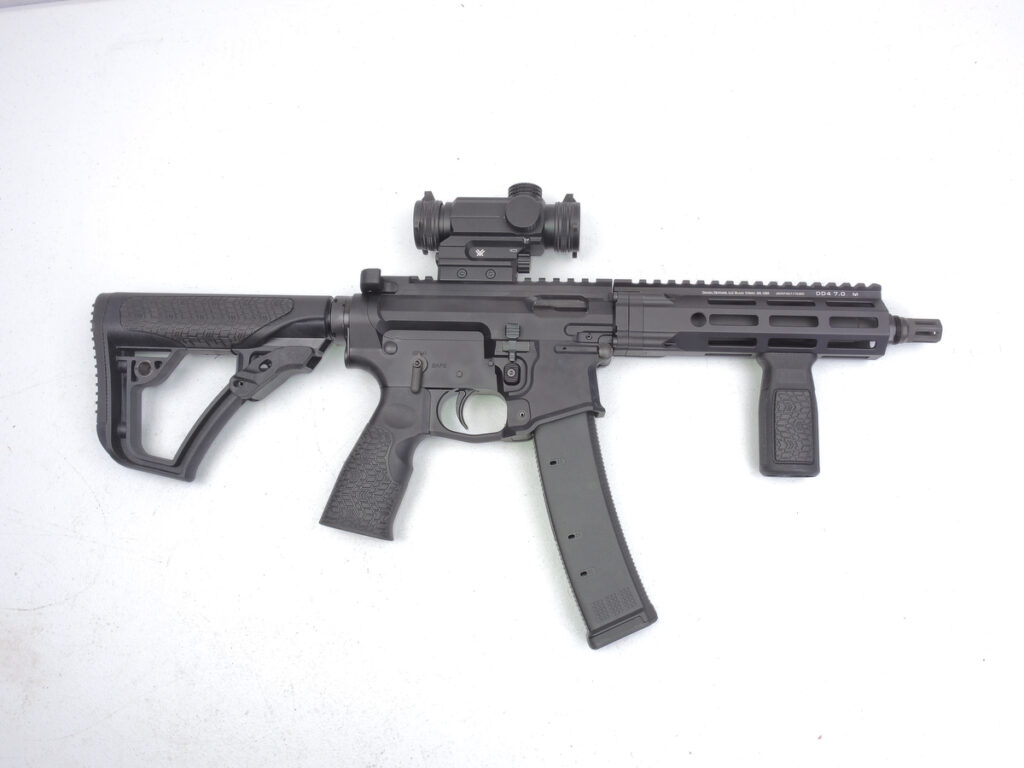

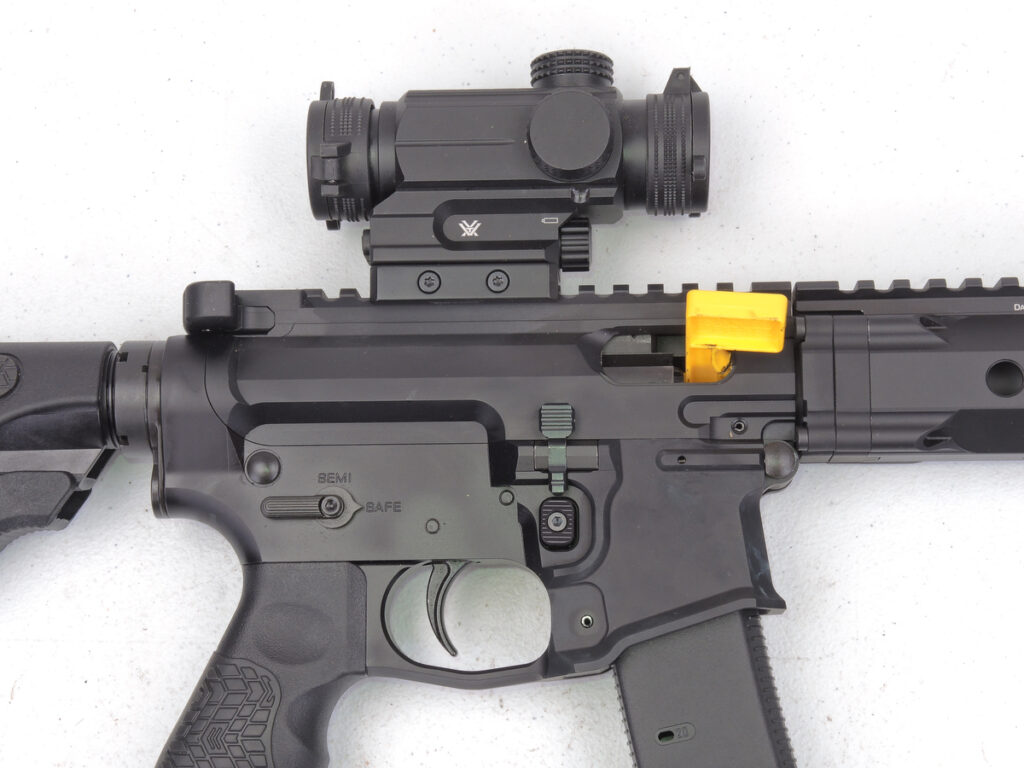
PERFORMANCE
Our live fire evaluation was done at the Boulder City Rifle & Pistol Club in Boulder City, Nevada on a 100-meter range. (BRPclub.org) We chose to fire at 25 meters, at which range the point of aim is roughly the point of impact (regarding elevation) for most 9x19mm duty rounds. Dennis Powell was the shooter, and all record fire included the HUXWRX RAD 9 silencer and Vortex Spitfire optic. Velocity was recorded with the Garmin Xero C1 chronograph. Initial sighting-in was done with basic range ammo – we used Western 9x19mm 124gr FMJ (target not shown).
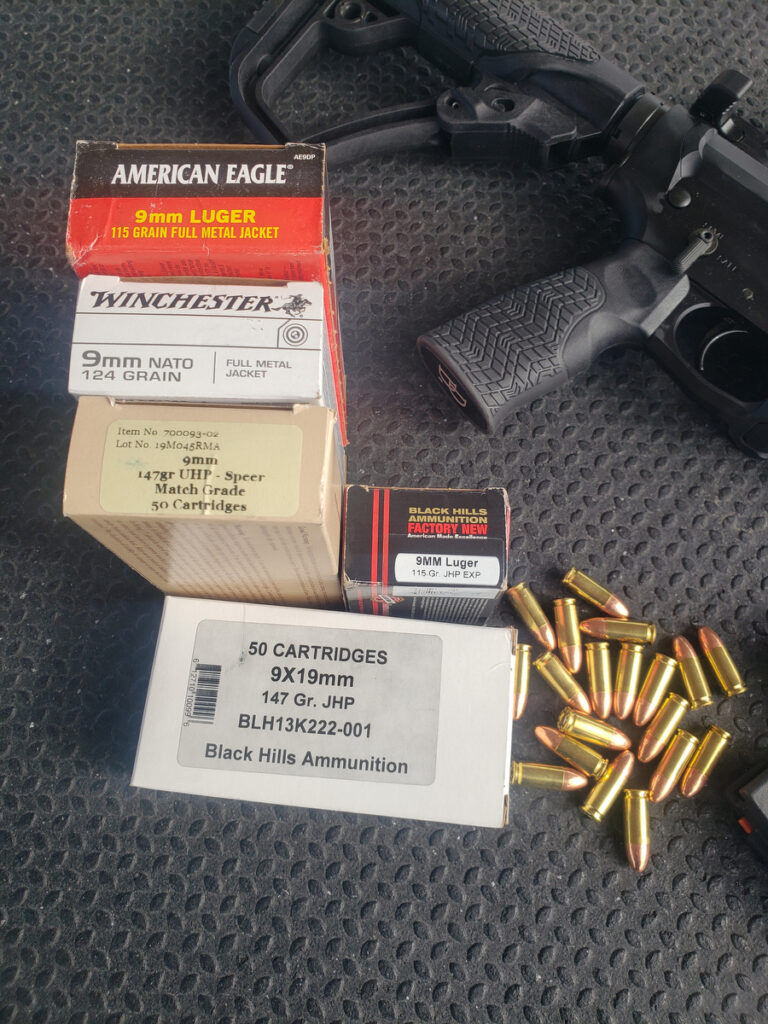
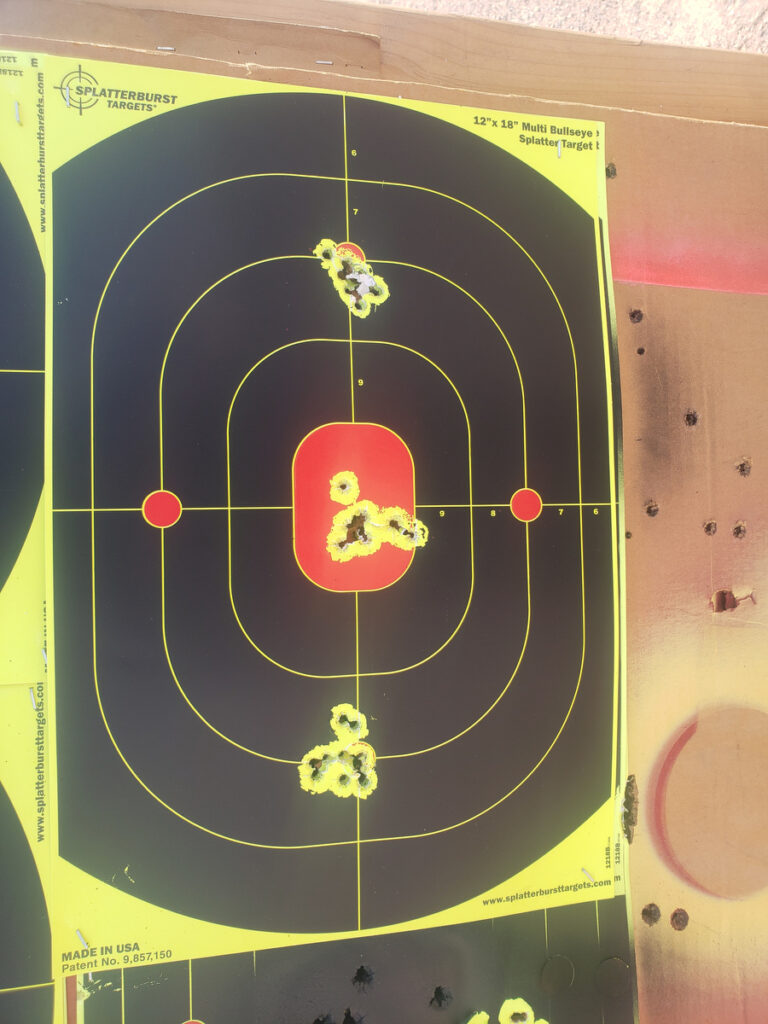
On the target, with 10-shot groups at 25 meters, we posted the following groups:
| Black Hills Ammunition 147gr JHP (TARGET BOTTOM) | Winchester 124gr FMJ (TARGET MIDDLE) | Red Mountain Arsenal UHP Speer 147gr (TARGET TOP) | |
| Average Velocity (FPS) | 1063 | 1098 | 1072 |
| Min/Max Velocity (FPS) | 1046/1095 | 1268/1293 | 1073/1103 |
| Standard Deviation (FPS) | 14.7 | 18.8 | 23.3 |
| Velocity Spread (FPS) | 49 | 56.8 | 30 |
| 3-Round Group Size (MOA) | .38 | 1 | .43 |
| 10-Round Group Size (MOA) | 1.4 | 1.8 | 1.4 |
Atmospherics (using Kestrel 5700):
| Altitude | 2314 ft |
| Temperature | 64°F |
| Wind Velocity | 7 mph (coming from behind) |
| Humidity | 34% |
| Barometric Pressure | 27.48 hg |
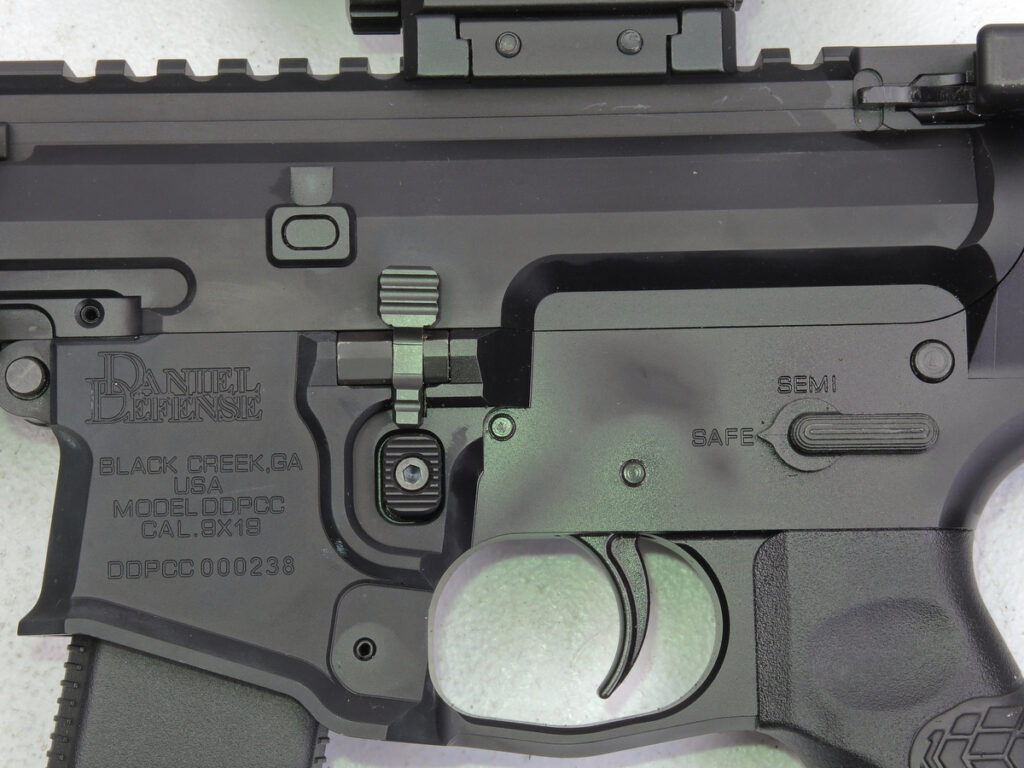
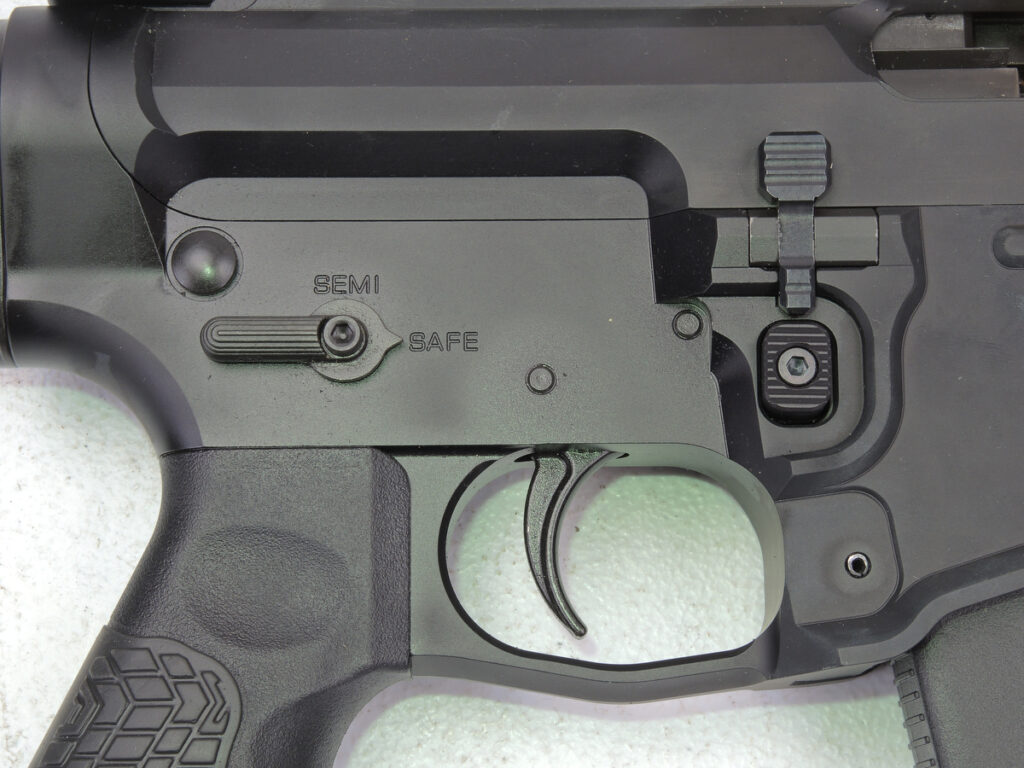
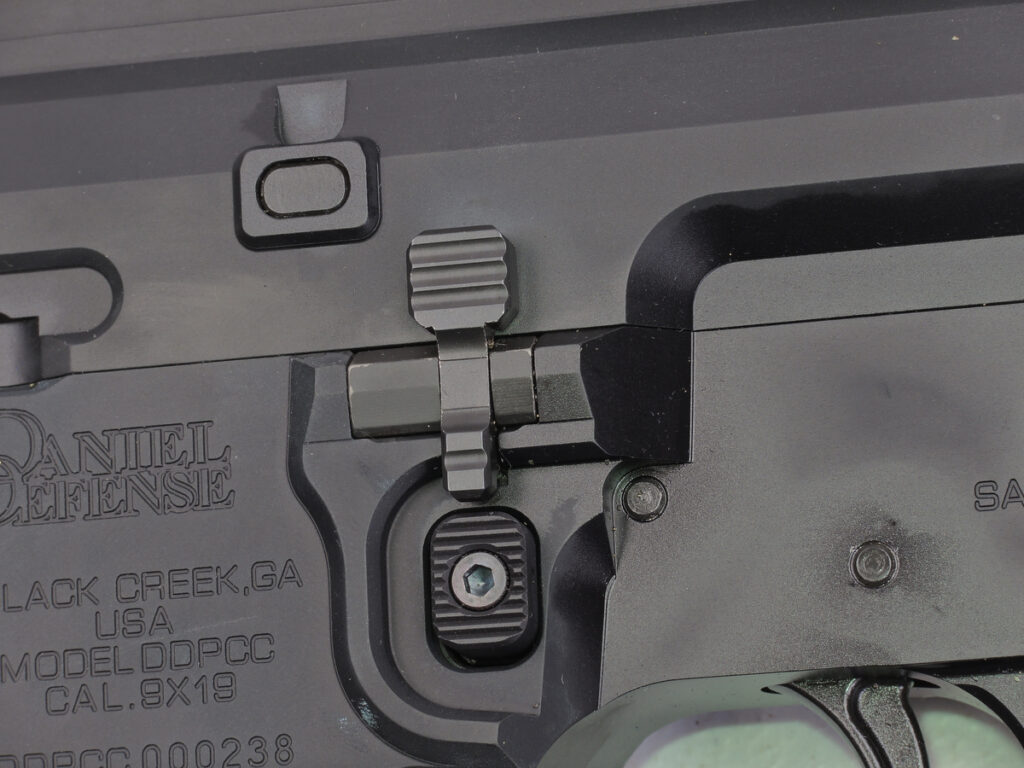

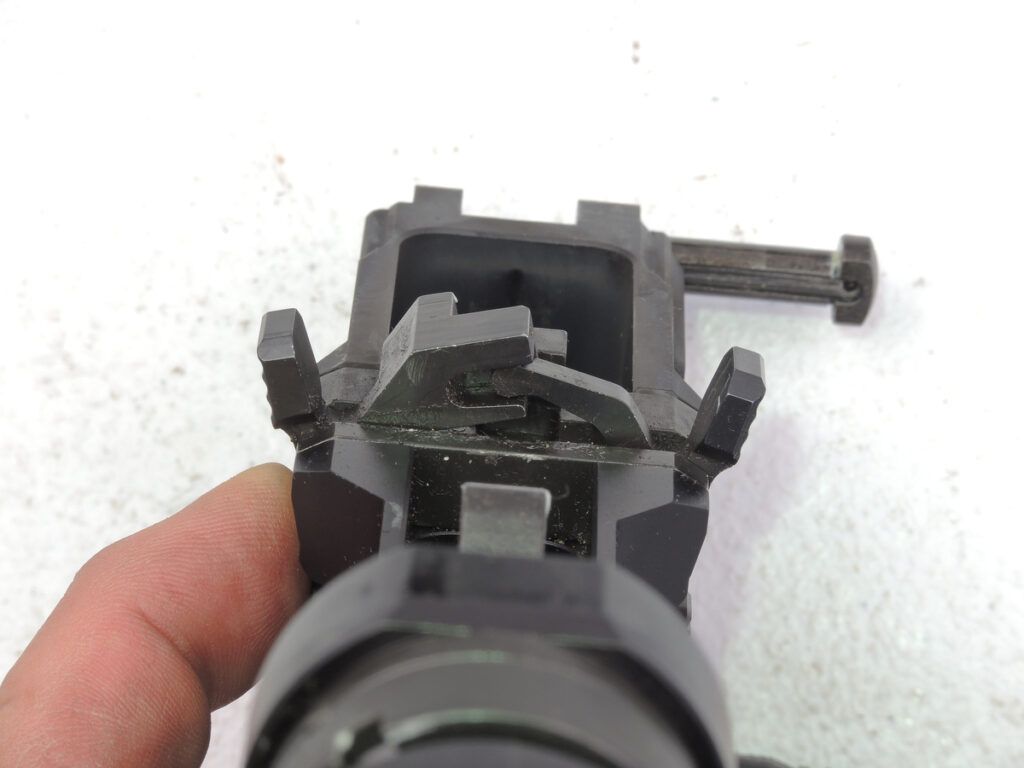

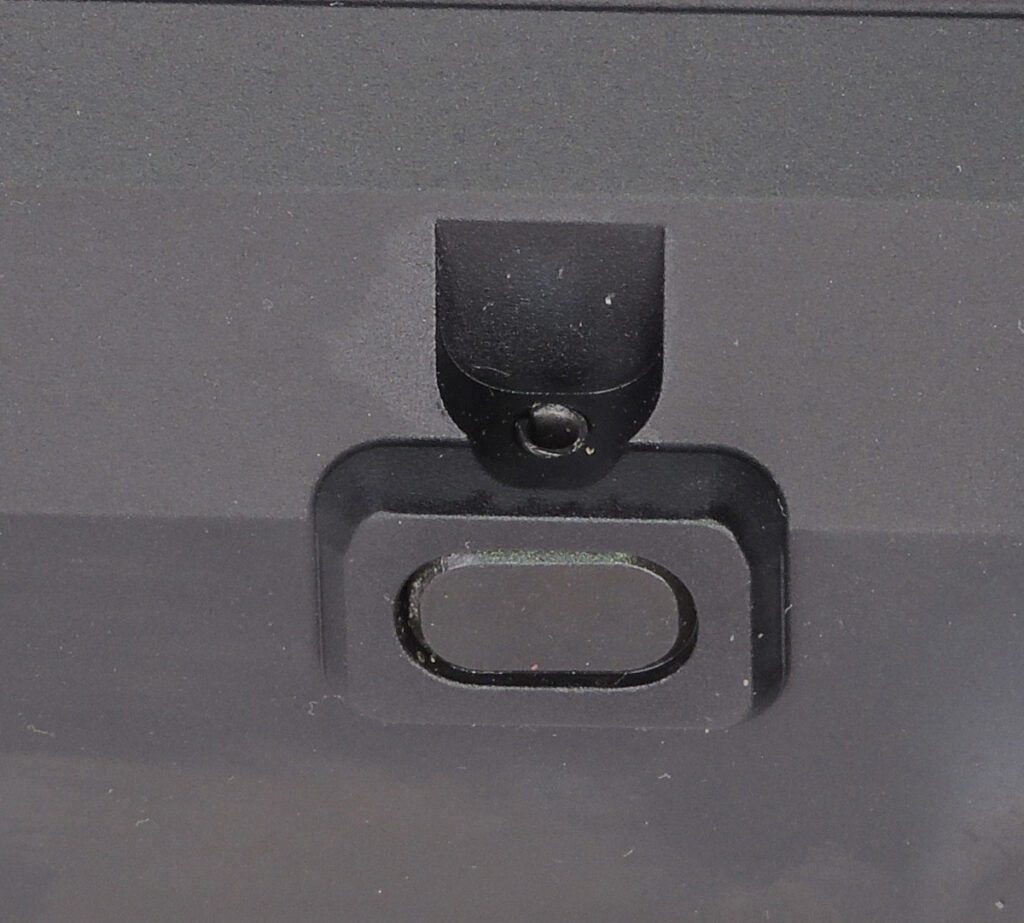
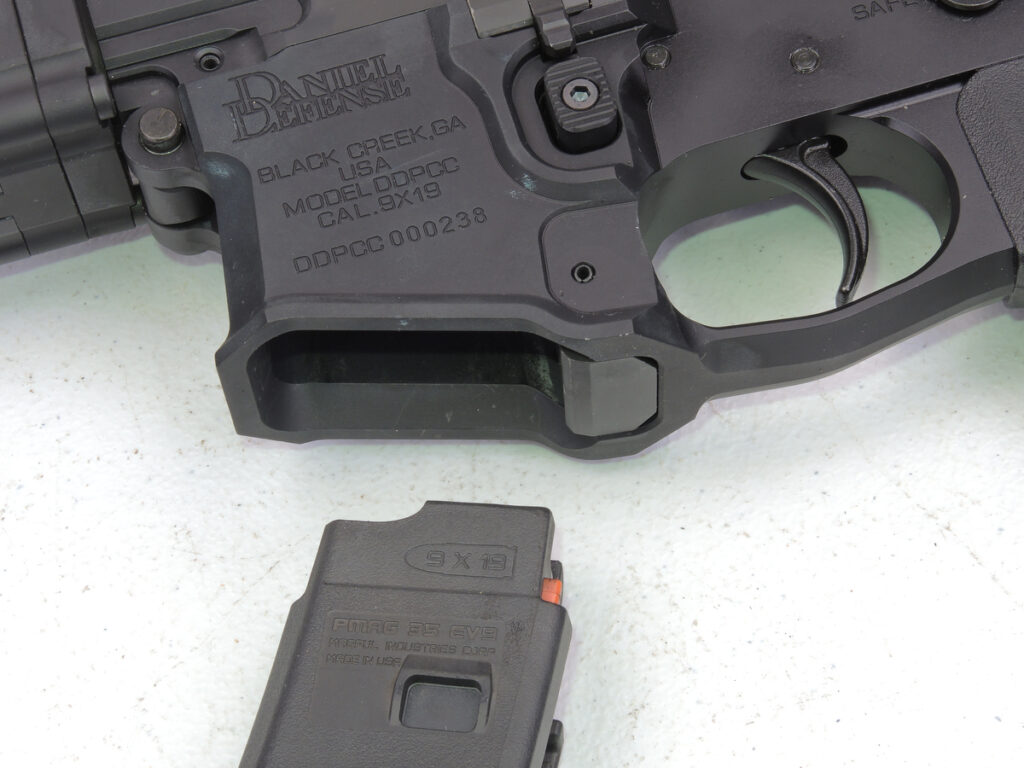
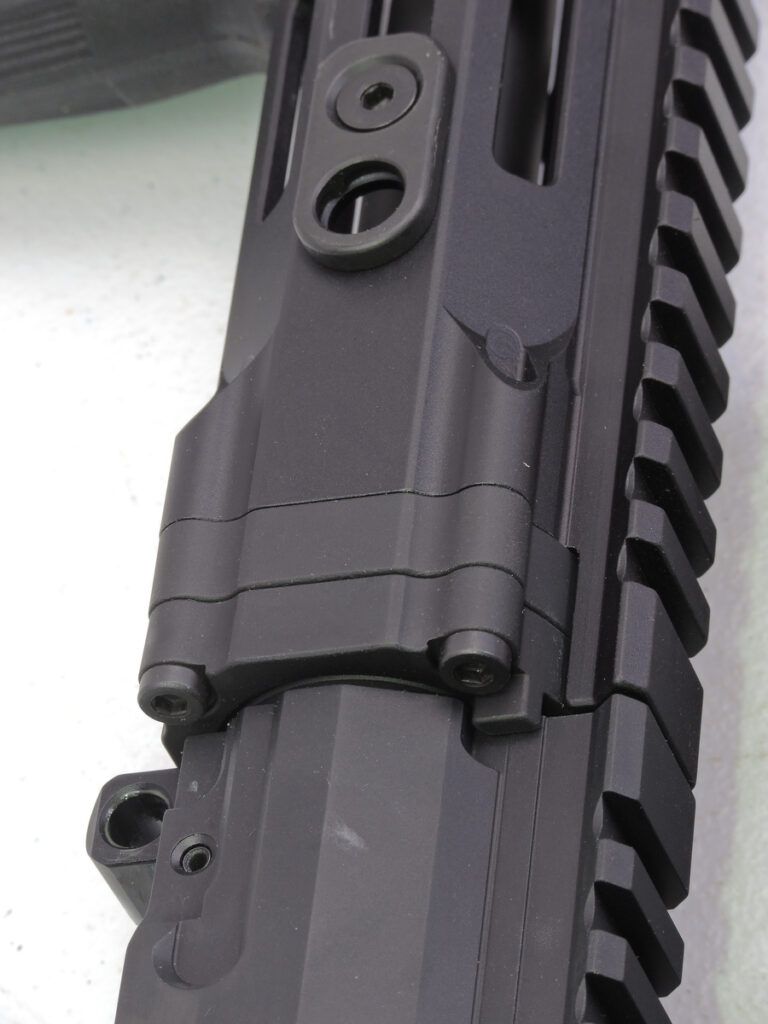

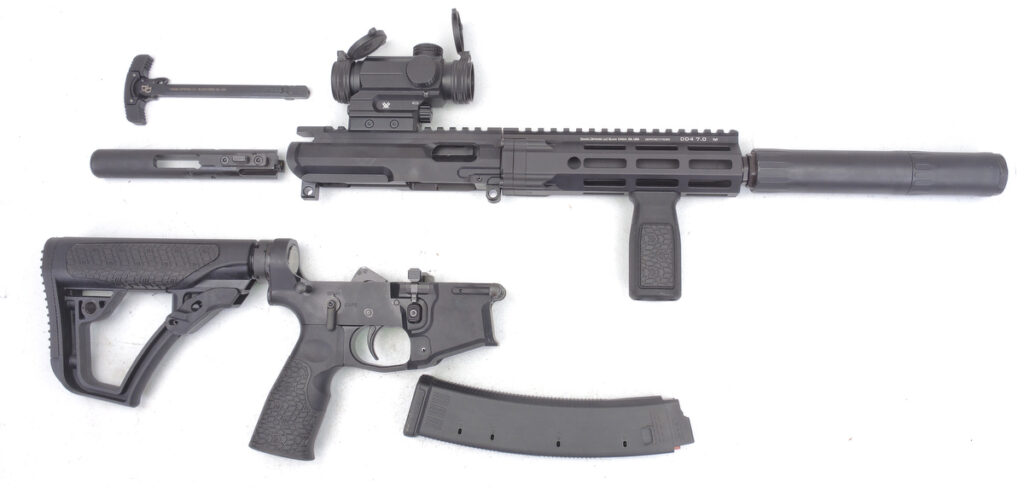
HUXWRX RAD 9 SUPPRESSOR
Daniel Defense chose to use the HUXWRX RAD 9 silencer for the PCC SBR. HUXWRX says “HUXWRX Safety Company is a human exposure workshop dedicated to building products that are optimized for the safety and health of our customers, without compromising efficiency or performance.”
HUXWRX was at one time OSS Suppressors, a successful and innovative manufacturer with their OSS “Flow-Through” technology. HUXWRX is focused on the “safety” aspect of their product’s effect on end users. With as much damage as frequent firearms use has done to the health of end users, this is pretty refreshing. As toxic gas mitigation has become a popular discussion topic, as many shooters have serious heavy metal issues in their blood, the issue is addressed by HUXWRX “Flow-Baffle” technology which uses a series of helical coils that decrease blowback, and actually blow gasses forward. The Flow-Baffle design directs the expanding propellant gases that escape from behind the projectile uncorking from the muzzle into the suppressor entrance chamber, away from the bore line. Once re-directed, the radial grooves route these gases forward, through the suppressor, and away from the shooter.
Our tests at the range confirmed the claims about the gas-forward operation of this system. It accomplished this without adding any perceived recoil. We’ve previously tested the HUXWRX suppressors on fully automatic M16 rifles and found no increase in their cyclic rate. It was clear that the HUXWRX suppressor tightened the group (as expected) while meeting our expectations for sound suppression performance. Sound pressure levels with the RAD 9 are expected to be in the 133-136 dB range, and to the ear, that sounded right. HUXWRX suggested their new Ca$h 9k would be a good option for the Daniel Defense PCC, but we did not try one.
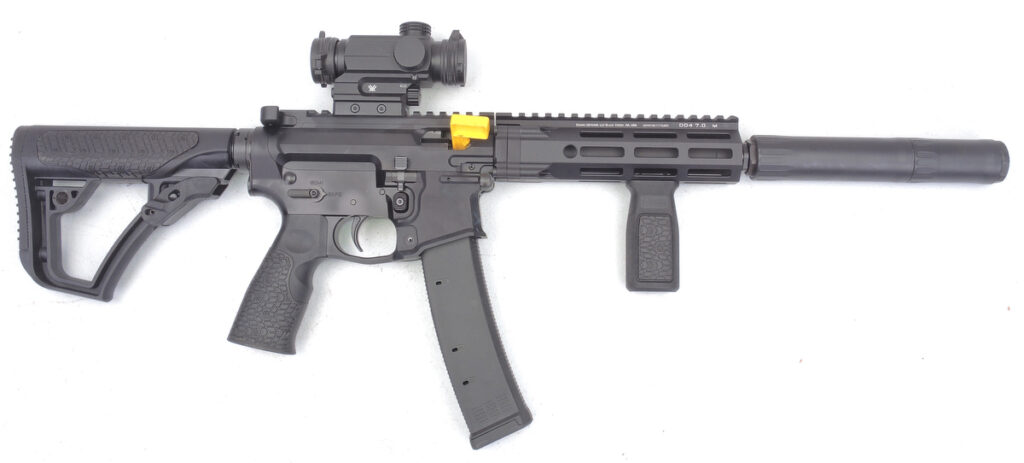
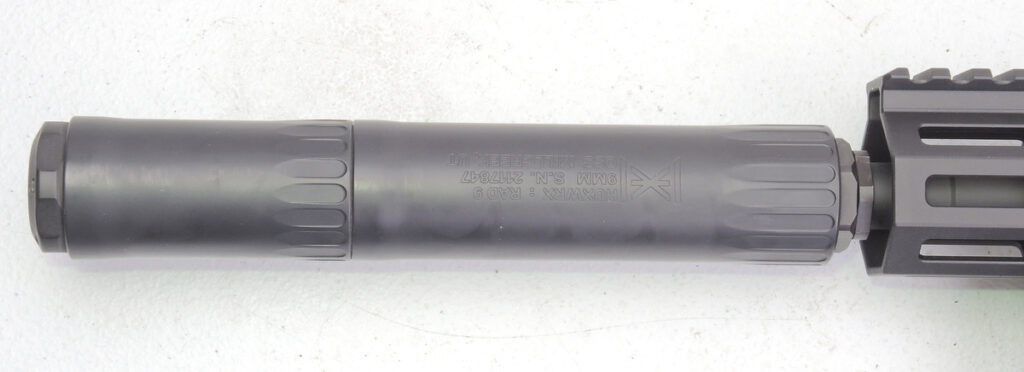
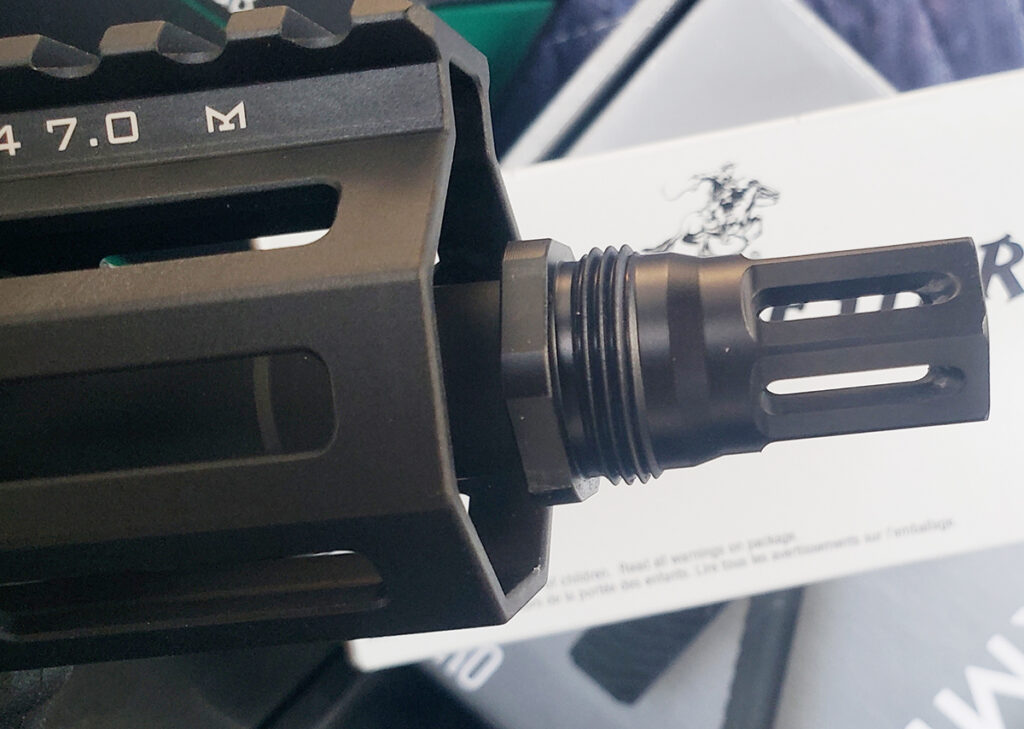
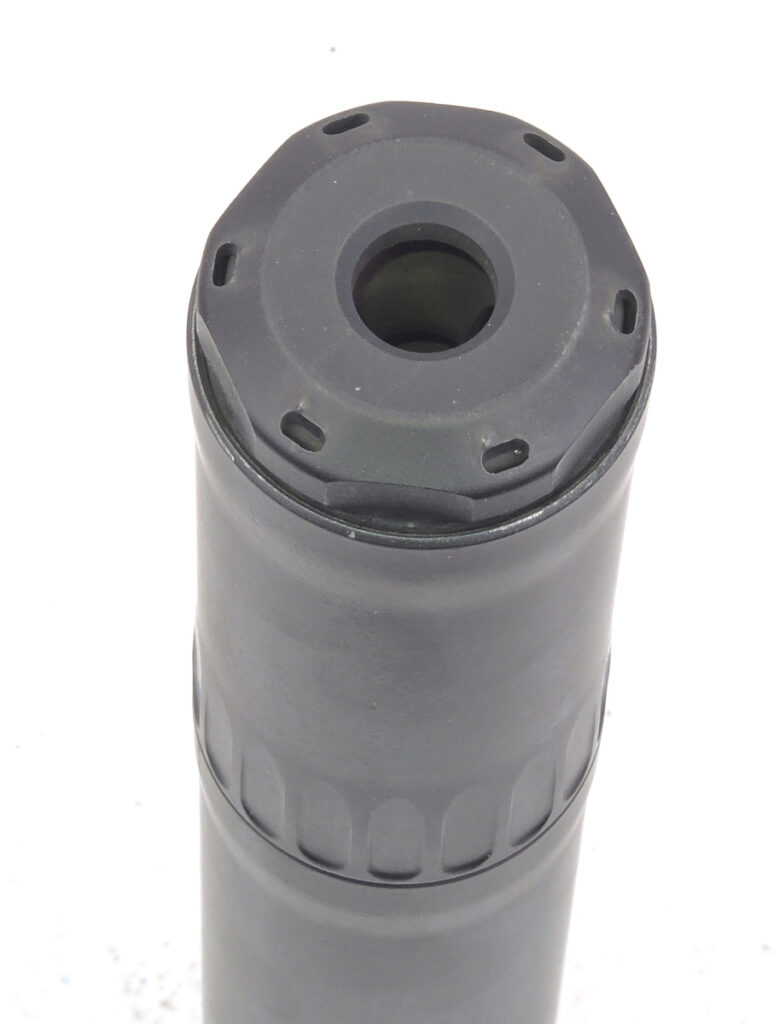
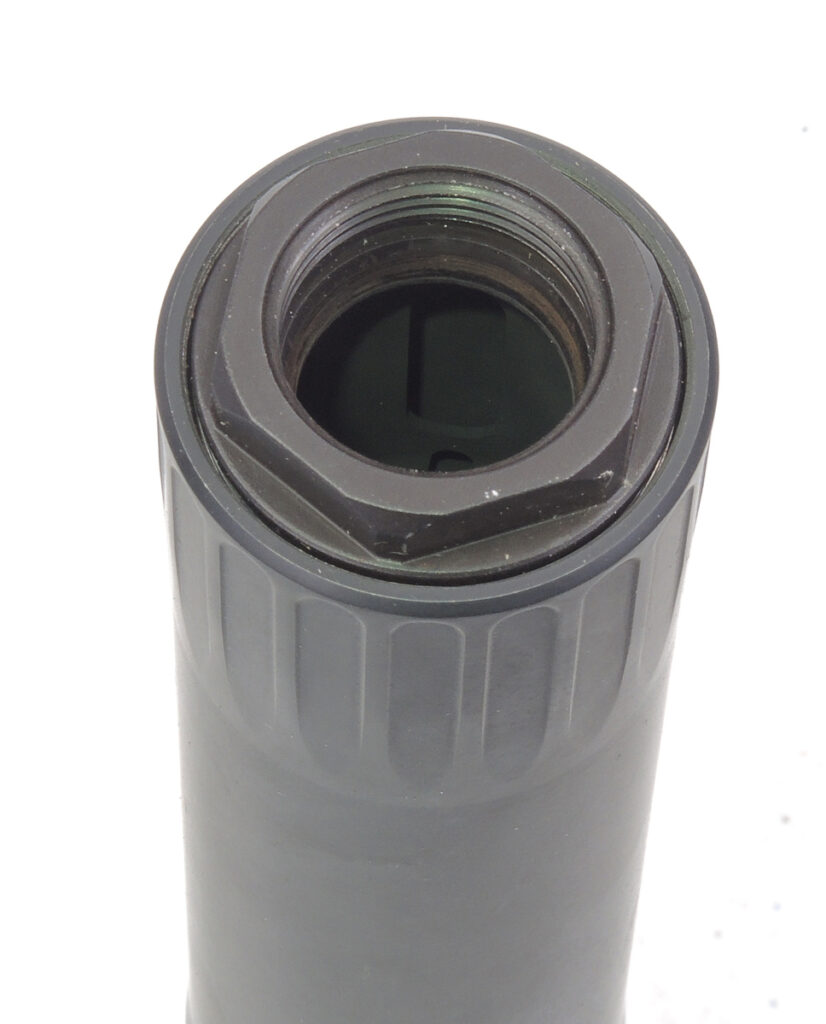
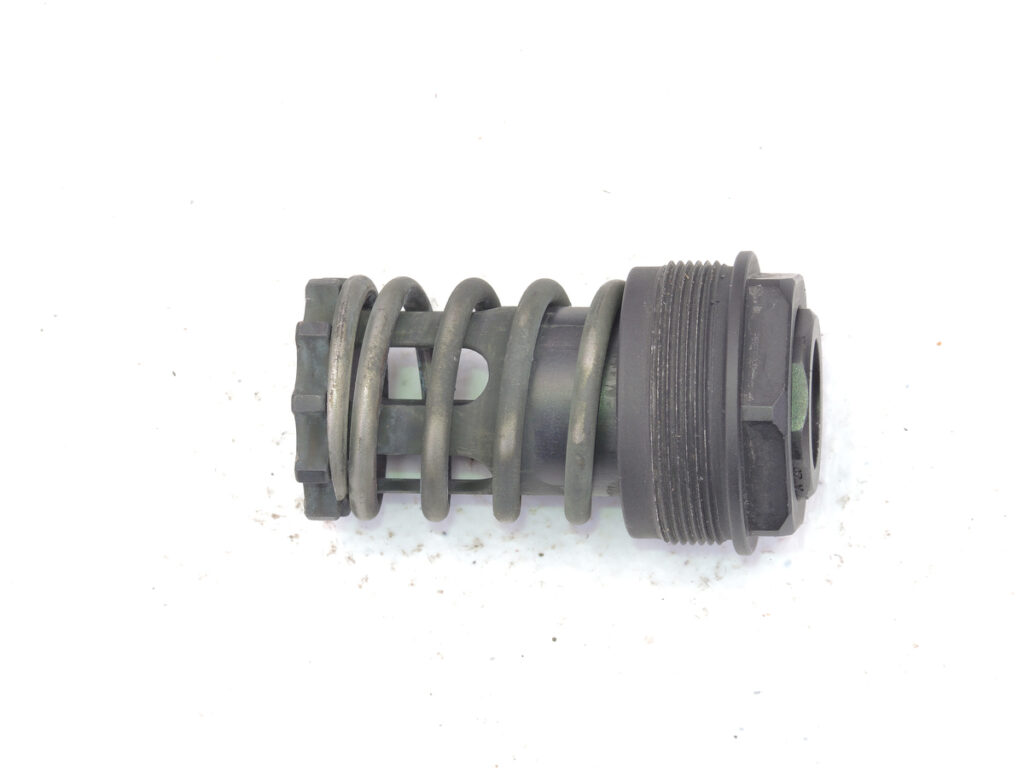
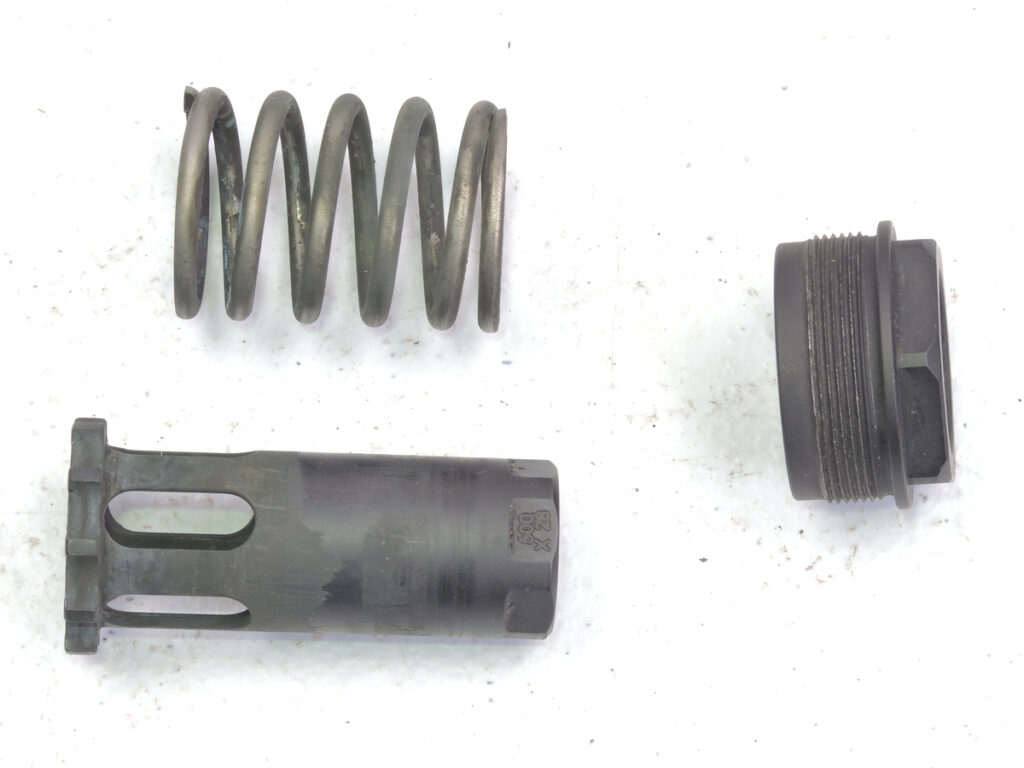
VORTEX SPITFIRE AR PRISM SCOPE
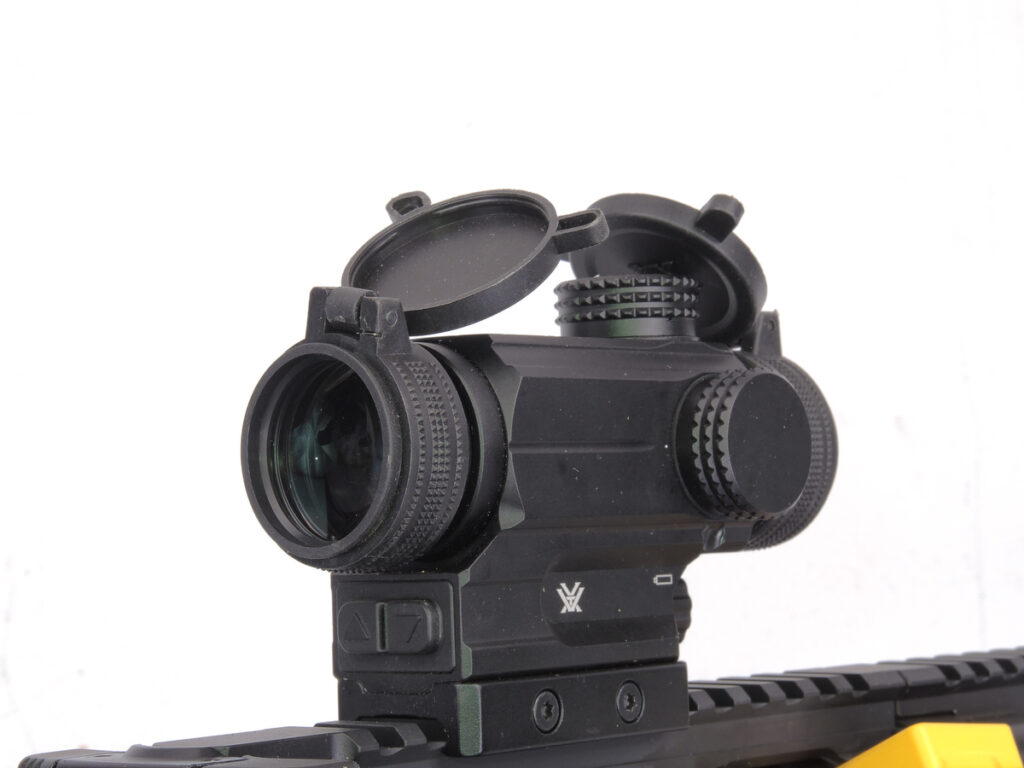
The Vortex Spitfire AR prism scope is designed specifically for the AR/M16 firearm family. That means 5.56x45mm, and in fact there is a bullet drop compensator (BDC) turret included. So why would we put it on a 9mm carbine? Because it’s designed for an AR, it’s small, very fast for target acquisition, and very accurate. With the range of the 9x19mm cartridge initially being designed for under 50 meters (of course, we shoot it farther), and the typical police AR rifle engagement being less than that (even police sniper engagements average a bit over 50 meters), we decided the Vortex Spitfire and the 9x19mm round complimented each other at these real-world engagement distances.
Most 9x19mm-issue cartridges have no elevation drop from point-of-aim out to 25 meters, and only 1-2 inches of drop at 50 meters. (We should note here that prism scopes are not compatible for use with Vortex’s Micro 6x, Micro 3X, or VMX-3T magnifiers). The illumination controls are two buttons located under the ocular lens; one has an up arrow, the other a down. The ocular is used for reticle focus – it’s rotated right or left when viewing a blank surface to get a sharp focus for the operator’s eye. All of our shooters were very pleased with the Spitfire AR optic, and each had their preferences on reticle color and brightness. At only 4.3 inches long, weighing 11.2 ounces, and yielding a 79-foot field of view at 100 yards, this FFP 1x optic is an unobtrusive enhancement for the Daniel Defense PCC.
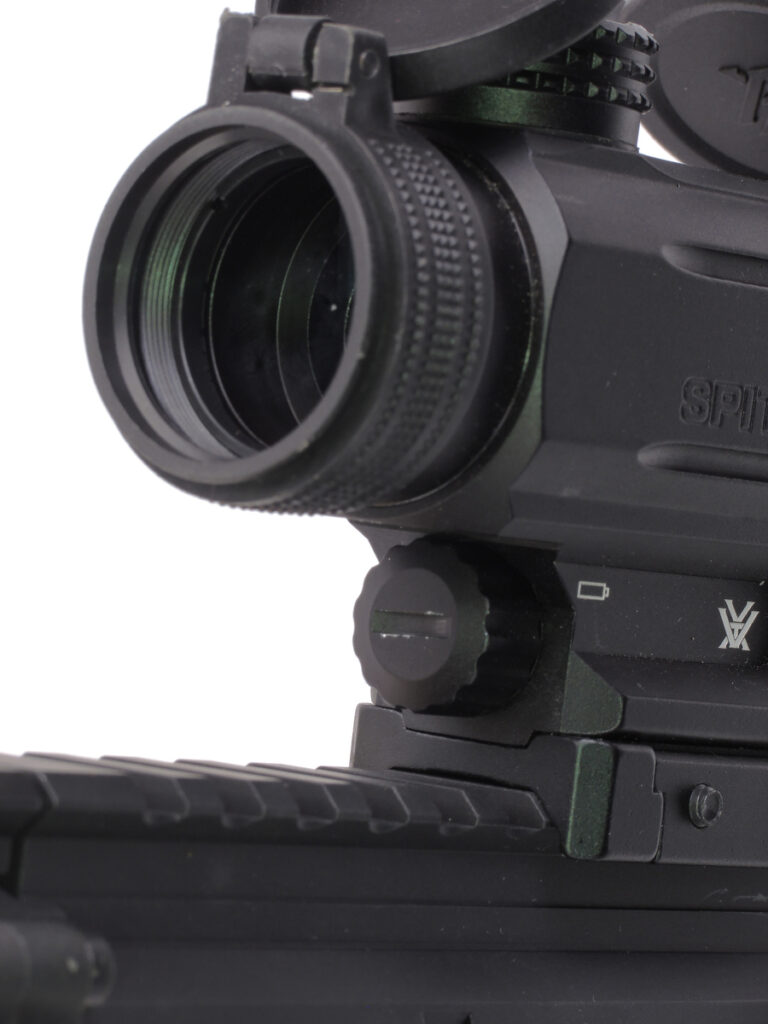
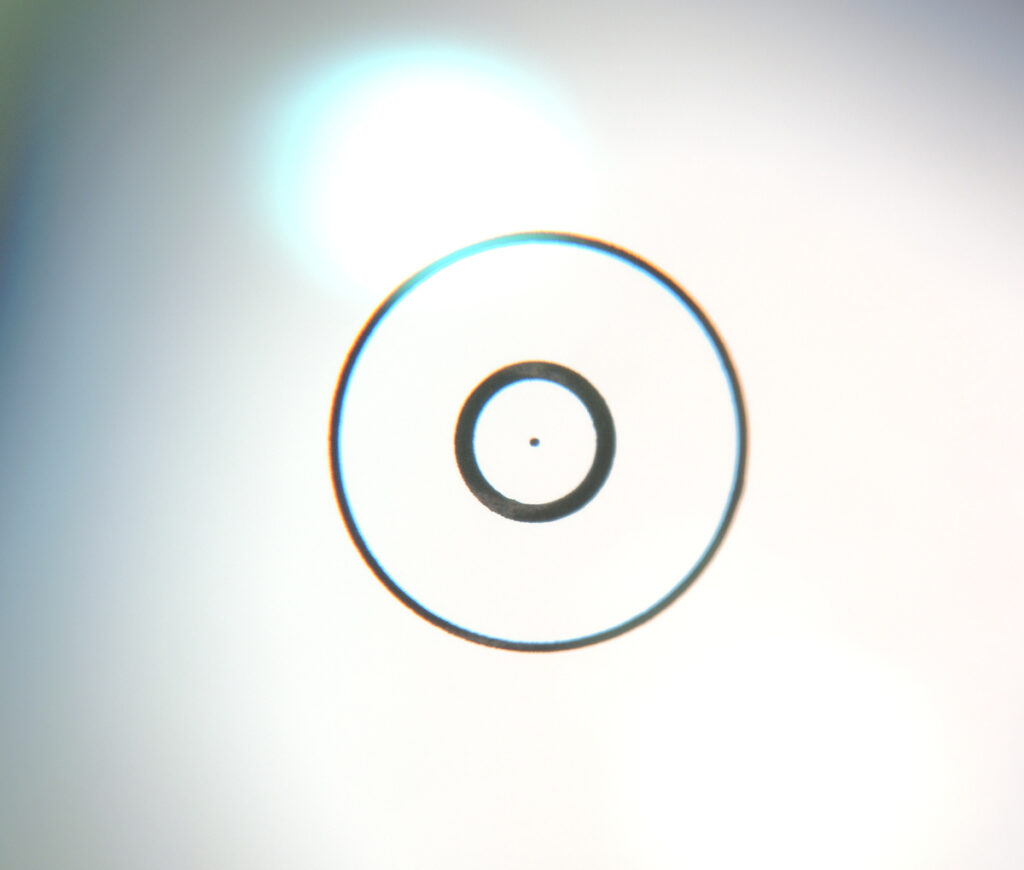
The Spitfire AR uses the Vortex “Dual Ring Tactical” (MOA) reticle. This is a glass-etched reticle and is very durable. Shown here, the illumination is at “0” so the DRT reticle was easier to photograph. In real use, there are five brightness levels; the lowest is “ultra-low” and is for use with night vision devices. The operator can choose either red or green illumination by momentarily pressing both the up- and down-arrow buttons at the same time. Color is more a personal choice, of course, but the ultra-low red works well with night vision goggles, perhaps better than green… again, it’s subjective. Reticle subtensions (the reticle markings) are in MOA, which will aid those who use the reticle for range finding.








